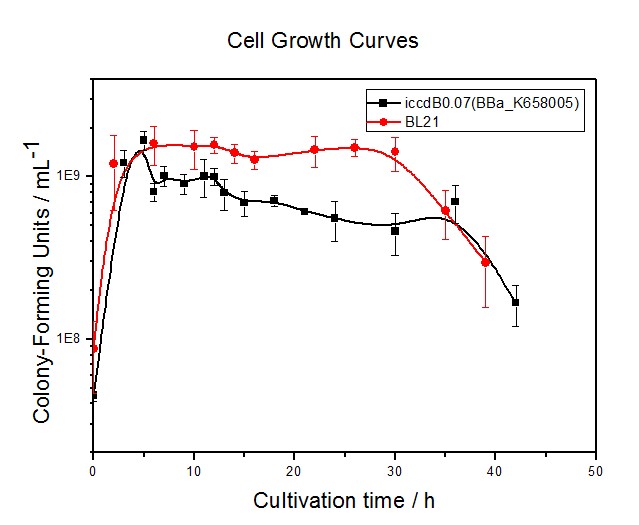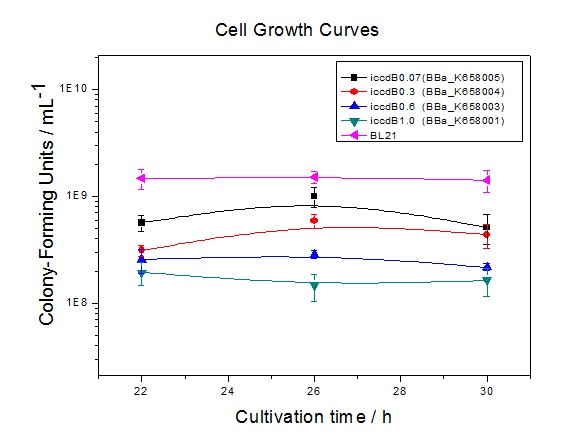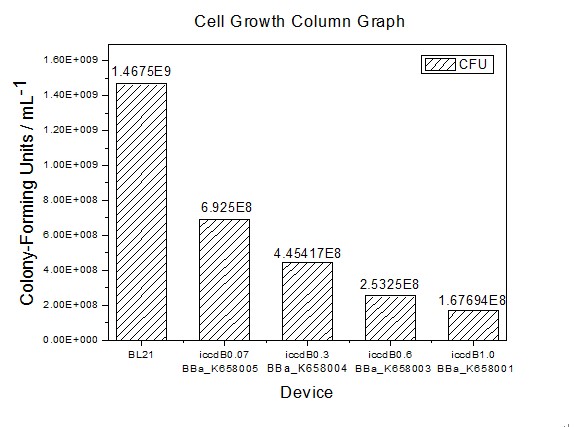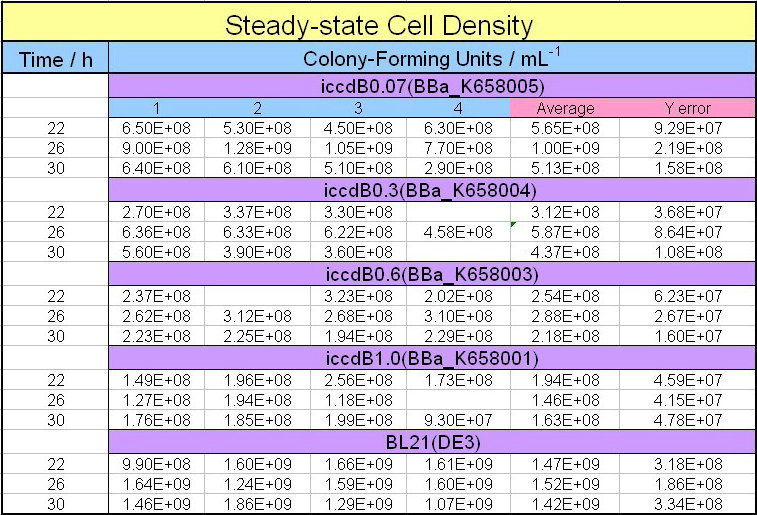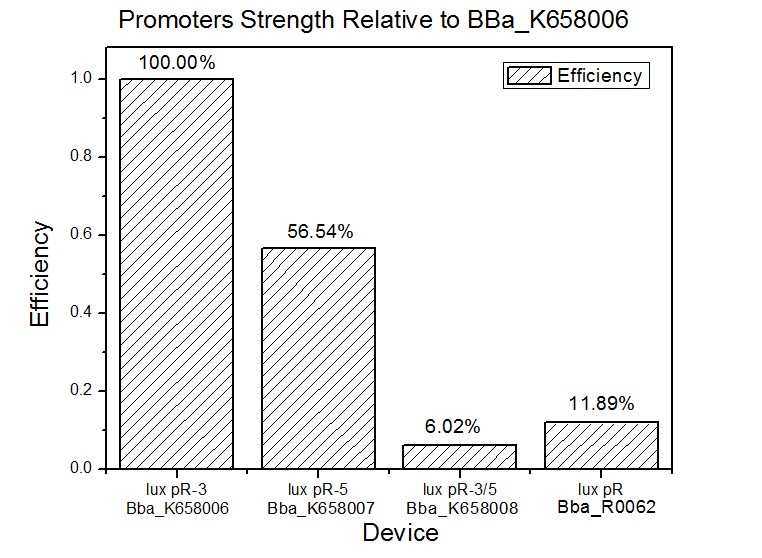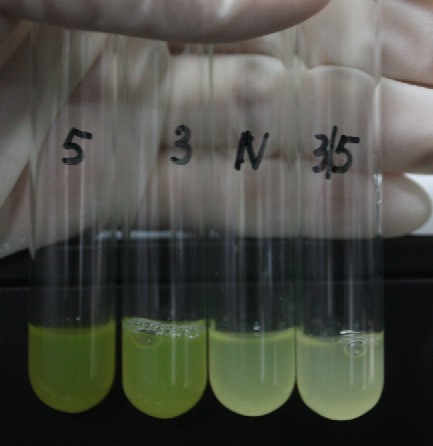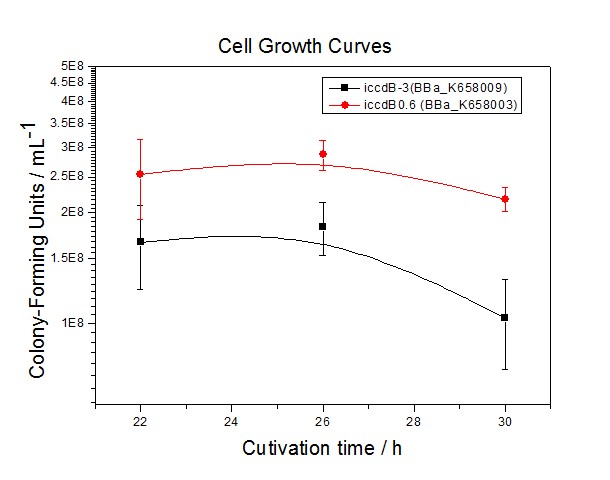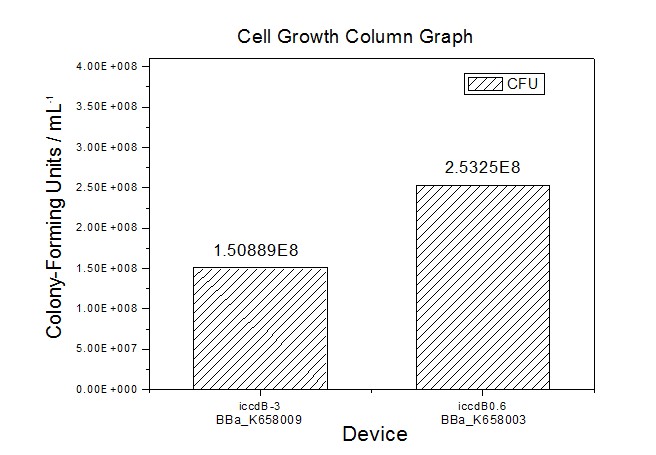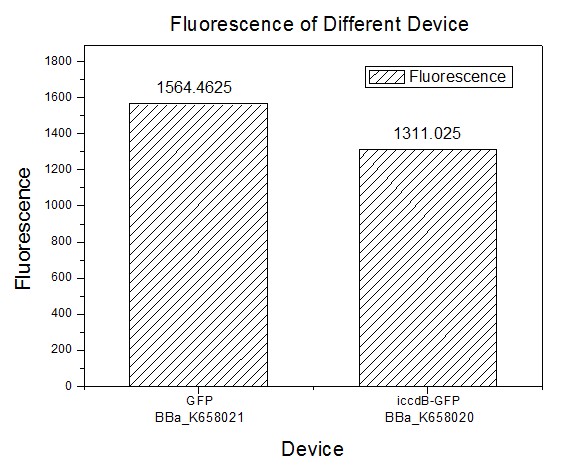Team:XMU-China/Result
From 2011.igem.org
(Difference between revisions)
(→Population-control devices with mutated promoters) |
(→iccdB->GFP) |
||
| Line 81: | Line 81: | ||
==iccdB->GFP== | ==iccdB->GFP== | ||
| - | [[Image:XMU_China_123.jpg|left|Figure | + | [[Image:XMU_China_123.jpg|left|Figure 9 Experimentally measured fluorescence at steady state of BL21's cells with iccdB0.6-GFP(BBa_K658020) and BBa_K658021|frame|Figure 9 Experimentally measured fluorescence at steady state of BL21's cells with iccdB0.6-GFP(BBa_K658020) and BBa_K658021.]] |
<html> | <html> | ||
<img src="http://partsregistry.org/wiki/images/4/41/XMU_China_block.jpg"> | <img src="http://partsregistry.org/wiki/images/4/41/XMU_China_block.jpg"> | ||
</html> | </html> | ||
Latest revision as of 11:03, 28 October 2011
 "
"

